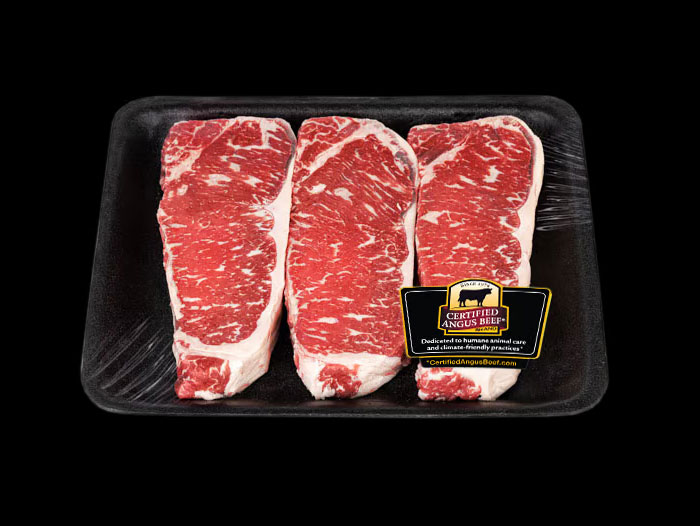How Certified Angus Beef is Strengthening its Messaging With Data, and Still Offering the Same Great Taste
April 26, 2023 | 4 min to read

The best place to reach consumers is at the meat case – that’s why there are so many labels on products. To be successful, brands must create messages that resonate and matter to its ideal customer.
The Certified Angus Beef ® (CAB) brand is often advertised as “the best,” and taste secured its growth around the globe. As a younger generation of consumers has more buying power in the market, their expectations of high-quality beef are expanding.
“Our product has to taste great every time and the consumer has to feel good about what the brand stands for,” said Nicole Erceg, CAB communications director. “They seek products they think are good for them, the animal and the planet.”
During a Learning Lounge session at the 2023 National Cattlemen’s Beef Association Trade Show CAB shared how it’s meeting customers’ expectations. There, Erceg and Kirsten Nickles, Ph.D., CAB animal care and sustainability scientist, shared how the brand is responding to consumer research findings.
(Caption) Kirsten Nickles, Ph.D., shared that the Working Grasslands Conservation Initiative is collecting data to support that cattle are part of a healthy ecosystem.
Leaning into Consumer Curiosity
When asked about sustainability, animal welfare is the number one consumer concern, Erceg said, followed by the environment.
“The way we reach most consumers is at the meat case,” she said. “So as we think about telling your story, it has to be simple and fit on a package.”
Starting in 2023, consumers may see the statement “Dedicated to Humane Animal Care and Climate-Friendly Practices” on packaging and marketing of the brand.
“We landed on this statement through consumer research,” Erceg said. “It’s obviously not something that connects with cattlemen; those aren’t words we’d use to describe cattle production. But it is what cattle producers are doing and it resonates with consumers.”
Supporting the statement requires more information on production practices to verify how you’re caring for cattle and managing the land.
Sharing a Stronger Story
Quantifying practices at the ranch is challenging, but accredited certifications like Beef Quality Assurance (BQA) verifies producers’ dedication to animal welfare to consumers. That’s why CAB is asking Angus breeders and commercial cattlemen to share their BQA or equivalent certification with the brand.
“It’s doing things like BQA certification, keeping good production records and having a grazing management plan,” Erceg said when speaking about increasing consumers’ trust. “As a food marketer, I can take that information and use it to garner more value for your product.”
If you’re BQA certified and would like to share your certificate with CAB, visit CutTheBull.info.
(Caption) Starting this year, you may see this label on Certified Angus Beef ® brand marketing. It’s an effort to resonate with consumers who want to feel good about the beef they buy.
Measuring Climate-Friendly Practices
Taking care of the land provides sustainable resources for cattlemen to raise premium beef year after year. The Working Grasslands Conservation Initiative supports the “climate-friendly” part of the marketing claim by creating a collaboration to measure environmental practices with Ducks Unlimited.
“We are experts of beef,” Nickles said, “and Ducks Unlimited has conservation experts and access to research that quantifies how cattle and grasslands are essential to a healthy ecosystem.”
The initiative supports a voluntary suite of programs for producers in the Northern Great Plains and collects data measuring carbon sequestration, soil health improvements, clean water resource development and biodiversity.
“Consumers trust producers and believe beef can be raised in a way that’s good for the environment,” Nickles said. “This allows us to gather actual metrics in a variety of environments and share it through the supply chain.”
While data is still being collected, initial findings will be released later this year.
(Caption) When marketing beef, the more information, the better, said Nicole Erceg, CAB director of communications. That allows the brand to share a stronger message and get more value for its product.
Investing in the Future
The best beef used to be a great-tasting, consistent steak–and that’s still important–but now we have to deliver more.
While we must meet consumer preferences, it’s driven by the supply chain delivering beef to consumers at grocery stores and restaurants and their sustainability commitments.
Whether you’re marketing Angus bulls or commercial feeder cattle, the more information you can collect on an animal, the wider your customer base is, Erceg said.
“That’s really what we’re trying to do at the brand, look for ways to add value along the chain,” she added. “And producers are at the very beginning and have the most information to share about that calf.”
